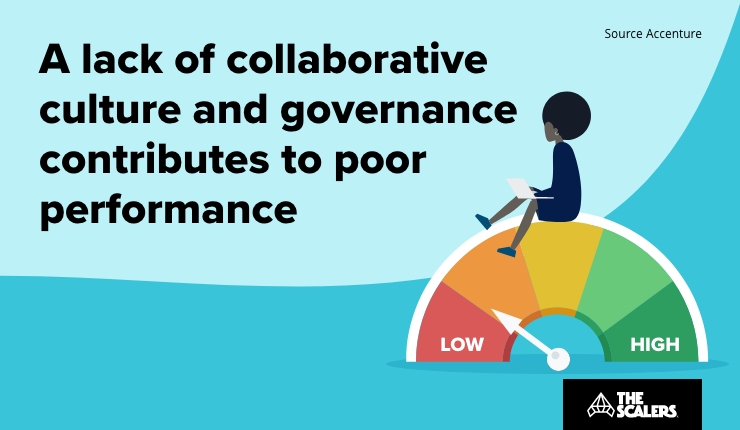Finding highly talented engineers with the right skills to complete large development projects is difficult. Most organisations waste a lot of time hiring and training locally. In IT, offshoring is becoming increasingly common as a solution to the talent shortage in places like Western Europe and North America.
An offshore team is often more effective than building one locally because organisations can leverage an overseas talent pool of well-educated and often better-skilled workers. Technology expertise and willingness to complete a project aren’t always sufficient when building a team overseas. Creating a culturally aligned team compatible with your business is much more vital. In this article, we will look at how to build an aligned team and will examine its benefits.
What offshoring means
It is crucial to first understand what we mean by offshoring. Although outsourcing and offshore were initially regarded as interchangeable, the two concepts have different connotations and effects. While outsourcing assigns specific company tasks to a third party, offshoring transfers internal tasks to an offshore team while maintaining complete control over their business operation. Offshore teams are treated no differently than onshore teams when you have a culturally aligned team. The staff are fully integrated into your existing setup.
The importance of cultural fit
Ensuring your team at home in HQ and your team offshore are aligned is so important. Put simply, offshoring isn’t done correctly if it doesn’t involve organisational and cultural alignment. In outsourcing, your developers are allocated and aren’t a proper part of your business.

This means that they’re often seen as an external pair of hired hands rather than genuine colleagues. In offshoring, when done with an expert team building partner, they’re full-time employees. As a result, they’re aligned with your vision and mission and care about the products they work on.
Create team spirit within your group
As offshoring becomes more popular, team spirit becomes even more critical in creating an aligned team — keeping your local and offshore teams on the same page. In order for teams to succeed, they need to have a sense of camaraderie.

Building long-term offshore ventures require this sense of togetherness. Partnering with someone you enjoy working with that challenges your thinking and, most importantly, knowing whether they can rely on you is essential. Sharing knowledge and experiences is only possible by building an open communication culture. It is a great way to integrate the entire team.
The best offshoring companies will often assign a Chief Happiness Officer in order to keep your offshore employees engaged and invested in their work, and the wider business at large.
Create a sense of responsibility and integrity
Creating a well-formed offshore team will experience your fair share of success. However, with success comes mistakes. But even if errors are made, you want to be sure that your team shares the same sense of honesty and follows the same ethical guidelines and codes of conduct. So, when forming an aligned team, remember to emphasise responsibility.

Integrity in business is also associated with professional ethics and must be a component of any aligned team and thriving corporate culture. Integrity means being sincere with one another and entails committing to those duties and projects that benefit the entire team.
Build an aligned team that is both open and willing
Another essential component to creating an aligned team is giving feedback and criticism honestly and impartially, in a helpful way that reinforces the idea that you are operating as a team. Offshore teams can work together by being transparent, open and willing to share their values and guiding principles.
The outsider’s perspective offered by an offshore partner can also significantly affect how you grow. There are numerous situations where this partnership can result in minor but essential modifications that lead to productive changes.
Important considerations when going offshore
There are several factors you need to consider when creating a culturally aligned team. The most basic being that you need to think of ways to build:
- A culture of collaboration
- A team invested in the same aims
- An team that shares the same vision
Getting the most out of offshoring requires integrating your best talent into your existing team and aligning yourself to one set of principles. Of course, your offshore partner will provide expert assistance in this integration.
The best way to check if your team members are invested in achieving your aims is to watch how they perform. For instance, do they define success in the same way? After all, they will serve as an extension of your team, so consider how you can leverage their unique strengths.
If you don’t identify and articulate what an aligned team looks like, how will you know if you achieve it? Make sure you communicate with your offshore team and have measurable and achievable goals that you both work for. And remind them that their commitment to your shared goal will ultimately drive real success.
Building an aligned team: in summary
A collaboration’s success depends on your team’s commitment and investment. However, your team members won’t care if your company culture is not aligned. A company’s core values form its identity and characterise its culture. One of the most critical factors in determining cultural fit is whether employees feel a genuine sense of importance and involvement. This means that your offshore team must have a cultural affinity for your existing values and support you in your aims all along your shared journey.
Start by finding an offshore partner that can help you build an aligned team. For instance, the values listed above are the guiding principles of The Scalers. Our teams follow them internally and in our daily interactions with our partners. Don’t hesitate to contact us if you want to learn more about the process. We will provide you with even more insights into how to build a close relationship between your partners’ geographically dispersed teams.
Build Your Team,
Not Just a Contract
With The Scalers’ offshore dedicated development team, you get engineers who join your workflow for the long run. Grow steadily, stay flexible, and work with people who care about the product as much as you do.








